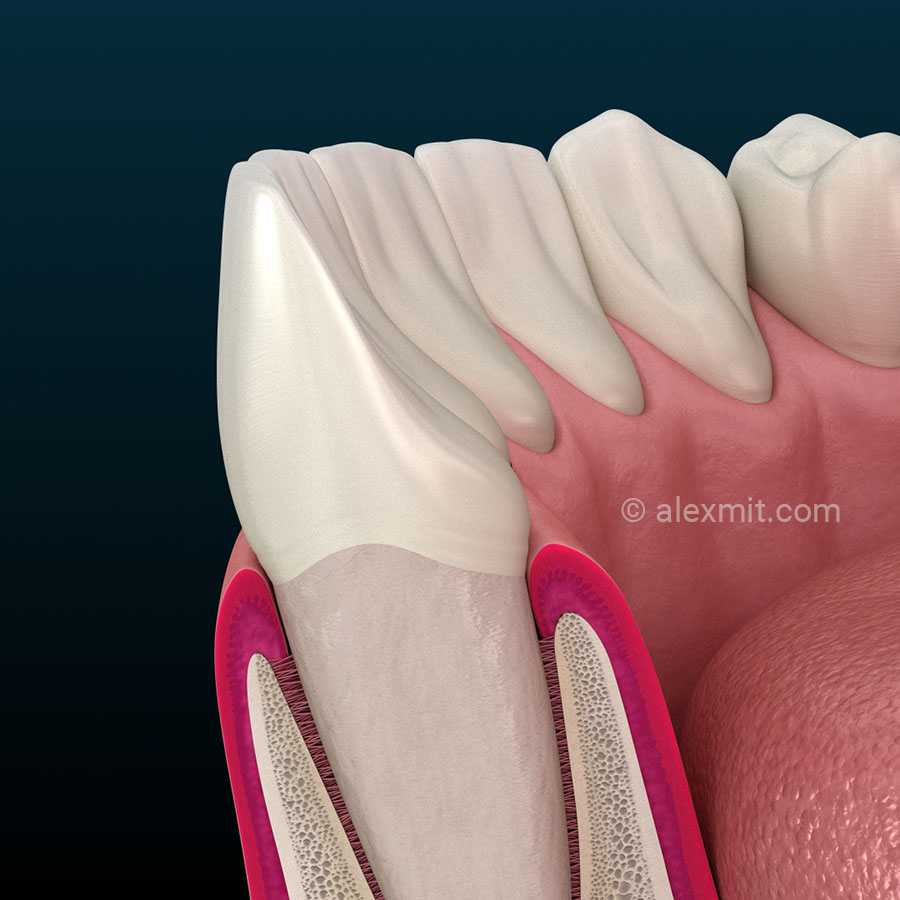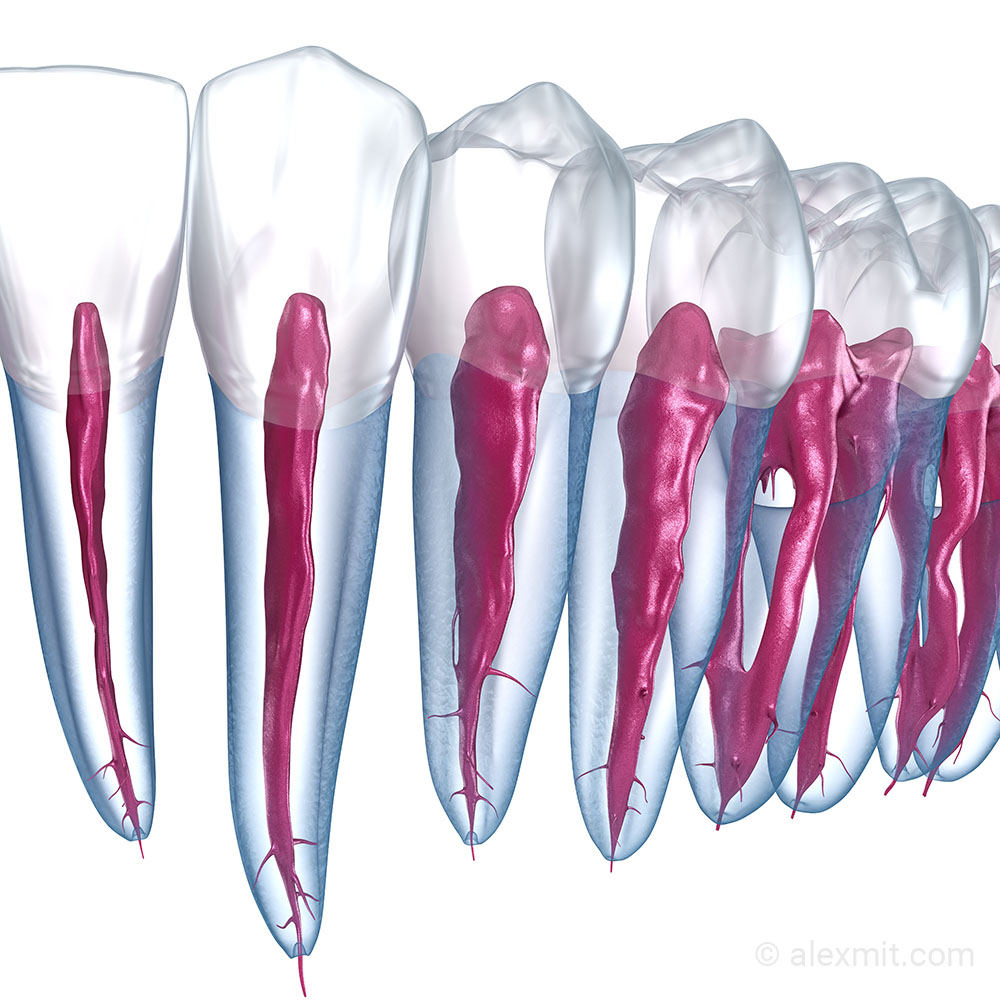Here we can see a good illustration of human teeth, root canal and gingiva:

Dental roots are the part of the tooth that extends into the jawbone and holds the tooth in place. Each tooth has one or more roots, which can vary in shape and size depending on the type of tooth. For example, front teeth typically have a single straight root, while molars have multiple roots that can be curved or twisted.
Anatomy of Dental Roots

The anatomy of dental roots includes several key components:
- Root Canal: The root canal is the hollow space within the dental root that contains the tooth’s nerves and blood vessels. This canal extends from the tip of the root to the pulp chamber inside the tooth.
- Cementum: The cementum is a hard, calcified tissue that covers the outer surface of the dental root. It serves as a protective layer for the underlying dentin and helps anchor the tooth to the jawbone.
- Dentin: The dentin is the hard, dense tissue that forms the bulk of the tooth’s structure. It surrounds the root canal and is protected by the cementum on the outside and the enamel on the crown of the tooth.
- Periodontal Ligament: The periodontal ligament is a fibrous tissue that attaches the tooth to the jawbone. It also helps cushion the tooth from the forces of biting and chewing.
The roots of our teeth play several important functions in maintaining our oral health:
- Support: The roots of teeth provide support and stability for teeth, allowing us to chew and speak properly.
- Nutrition: The blood vessels and nerves within the root canal provide vital nutrients and oxygen to the tooth, helping to keep teeth healthy.
- Sensation: The nerves within the root canal also allow us to feel hot, cold, and other sensations, helping us avoid potential damage to our teeth.
- Remodeling: The periodontal ligament surrounding the dental root is constantly undergoing a process of remodeling, which allows the tooth to adjust to changes in the surrounding bone tissue.

Teeth pulp is a soft, spongy tissue that fills the hollow center of our teeth, known as the root canal. It is comprised of nerves, blood vessels, and connective tissue, and is responsible for maintaining the vitality of the tooth.
Function of Teeth Pulp :
Teeth pulp plays several crucial functions in maintaining the health and function of our teeth:
- Sensation: The nerves within the teeth pulp allow us to feel sensations such as hot, cold, and pressure, helping us to avoid potential damage to our teeth.
- Nutrition: The blood vessels within the teeth pulp provide the tooth with vital nutrients and oxygen, helping to keep it healthy.
- Defense: The teeth pulp contains immune cells that help defend the tooth against infection and injury.
- Development: During tooth development, the teeth pulp helps to form the hard tissue of the tooth, including the enamel, dentin, and cementum.
